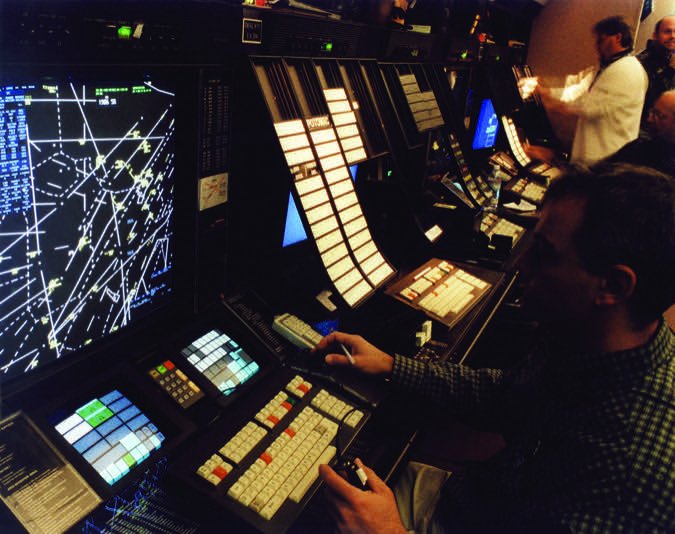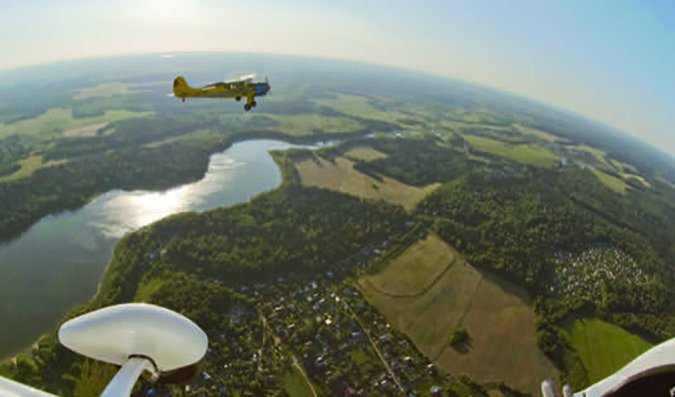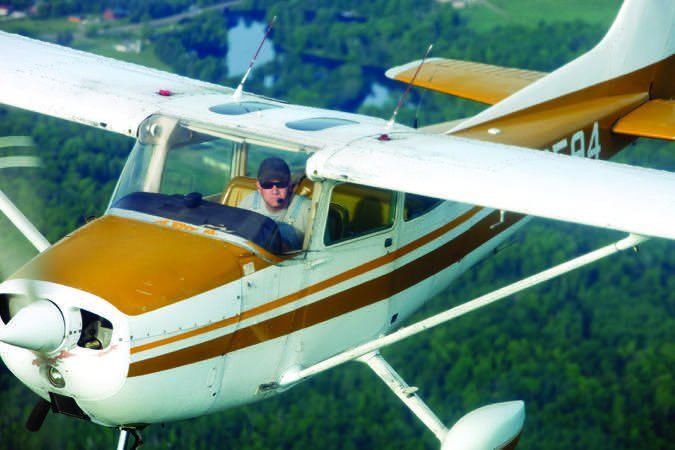No matter what it’s called—flight following, VFR advisories or the FAA’s official term, “Radar Traffic Information Service”—the radar-based assistance ATC provides VFR pilots to help them identify and avoid nearby traffic often can be a mystery to pilots. The reasons why are complicated— often involving lazy instructors and low-level training flights that rarely use ATC—but it’s not uncommon for a freshly certificated pilot to not know how to obtain VFR flight following. Because they’ve had little exposure to the practice, they also often don’t know what to expect from ATC once the service is being provided or understand what’s expected of them.
And that’s a shame, since obtaining and using flight following is a skill that’s definitely worth having in your toolbox. It’s especially useful on a long, VFR cross-country flight but is equally valued just scooting around Class B and C airspace. So, what is this service, and how can pilots use it? More important, since it’s entirely at the controller’s discretion, how can pilots “hack” the system—maximize the chances they’ll get the services they want?
What Is Flight Following?
The FAA’s Aeronautical Information Manual (AIM) describes what we commonly know as VFR flight following in Paragraph 4-1-15, Radar Traffic Information Service. It’s described as a service in which pilots “are advised of any radar target observed on the radar display which may be in such proximity to the position of their aircraft or its intended route of flight that it warrants their attention.” Importantly, the AIM continues: “This service is not intended to relieve the pilot of the responsibility for continual vigilance to see and avoid other aircraft.”
To obtain and use flight following, your aircraft needs two things: a communications radio and a transponder. Once ATC issues you a squawk code for the transponder and identifies your aircraft, the controller will advise you of any potential traffic conflicts observed on the radar screen.
When departing a Class B or C airport, radar services are provided once you’re identified, and can be continued as the flight moves from one ATC sector or facility to another. An important distinction is that while in Class B or C airspace, separation standards may also be applied. While en route, the pilot contacts the appropriate ATC facility and requests the service.
Providing radar services to VFR flights is on a “workload permitting basis.” That’s FAA-speak for “if you’re soaking up all the controller’s time, he’ll terminate you so he can concentrate on the other traffic he’s handling.” It says so right in the AIM: “Controllers possess complete discretion for determining whether they are able to provide or continue to provide this service in a specific case. The controller’s reason against providing or continuing to provide the service in a particular case is not subject to question nor need it be communicated to the pilot.” With that kind of discretion, we need to make it easy for the controller to give us what we want.
In addition to traffic advisories, other services are provided by radar-equipped ATC facilities (e.g., other than most control towers), including safety alerts (weather, terrain, obstructions) limited vectoring (upon request) and sequencing for arrival at your destination. You’ll also receive one of the central benefits of VFR flight following: it gets you into the ATC system, and can facilitate getting an IFR clearance in a hurry, or just obtaining a VFR Class B transition.
What It Isn’t
Meanwhile, it’s especially easy for instrument-rated pilots to confuse flight following with the radar services they might otherwise receive when operating on an IFR flight plan. (I’m not the first, or last, instrument-rated pilot to make the mistake of switching from approach control to a tower and reporting cleared for a visual approach, which is an IFR clearance, when operating under VFR and receiving flight following.) That’s because the two services are almost identical most of the time, and it’s easy for old habits to encroach, even when we know better.
But that highlights a major consideration with VFR flight following: It’s not an IFR clearance. Period. It does not suddenly confer on the pilot an instrument rating. Even pilots with the rating and flying a capable airplane must not presume they can poke through a white puffy here and there, or descend through a thin overcast to their destination, without an appropriate IFR clearance.
Even though you’re “talking” to ATC, who knows who you are, where you are and where you’re going, you still have to maintain VFR. That can require changing altitude, turning or both. And as highlighted in the sidebar below, ATC wants to know about any change in your altitude. That likely will be communicated to you when ATC reports you’re in radar contact. The statement will go something like this: “November one two three four five, radar contact five miles north of Podunk. Maintain VFR; advise of any change in altitude.”
Another thing flight following is not? A substitute for looking out the window. Even when in visual conditions on an IFR clearance, flightcrew need to look for other traffic, implementing the “see and avoid” practices we were taught as primary students. That’s especially true in remote areas where potential traffic may not even have a transponder (they’re not required everywhere, and some aircraft you may encounter—gliders and hot-air balloons come to mind—don’t have electrical systems to power them, anyway).
How To Get It
It’s ironic that those who sound like they need flight following the most are often the ones least likely to receive it. If your initial request of a controller sounds like you don’t know what you’re doing, he or she is on solid ground if they refuse service, or give you a different frequency with the suggestion “give them a call in 20 miles.”
Since you’re asking for a completely optional ATC service, you should sound like you know what you’re doing. Once on the correct frequency and during an appropriate lull in the conversation, your initial call to ATC simply should be your callsign, something like “Gotham Center, one two three four five.” That does two things: One, it lets ATC know you have a request and, b) since a quick scan of clearance strips doesn’t show your N-number, the controller can deduce you’re looking for VFR services. It also minimizes your use of the frequency—something controllers always appreciate.
Once ATC identifies you, you’re in “the system,” at least the local one. If you’re landing at an airport served by that ATC facility, it’s likely you’re finished negotiating with ATC; enjoy the rest of the flight. But if you’re motoring off across the state, you’ll likely need a handoff to the next facility. That works just fine if the controller entered your information into the ATC system correctly and a “clearance strip” is created and transferred to the next facility. Sometimes, they don’t have the time or don’t make the effort. One way to tell is if your squawk code begins with a zero. If it does, it could mean you’re only in the local radar system and likely won’t be handed off.
How To Use It
In keeping with the admonition that flight following is not an IFR clearance, it should be used as another tool in your cockpit. Because of its limitations, it’s never a substitute for always conducting a thorough visual scan for traffic outside the airplane. It’s also not a substitute for poor airmanship—ATC won’t do your flight planning for you and if you appear to need a lot of hand-holding, don’t be surprised when ATC tells you “radar services are terminated, maintain VFR, squawk 1200, good day.”
But the most important thing you can do to maximize flight following’s value is listen. Pay attention for your call sign, obviously, but also keep track of what’s going on generally. Which way is the nearby major airport landing? What kind of traffic flow is being experienced? Are the airliners freaking out about ride reports, signaling there could be bumps ahead? Are they deviating around weather? Are the controllers busy, or does the traffic load appear normal? Is the controller calling you as traffic? If so, where’s the conflict? If you’re doing it right, you should be able to spot the Southwest 737 at 10 o’clock and three miles before ATC tells you about it. That’s because a) you know where you are and what you’re doing and b) heard ATC call you as traffic to the 737.
Another irony? Probably the worst place to try obtaining VFR flight following is in airspace where you really, really need it, like when you’re near or below a Class B tier. The airspace design itself tends to compress traffic onto certain routes at similar altitudes, and there can be a lot of traffic milling around just adjacent to the Bravo.
In an ideal world, ATC would always provide VFR services. In the world we occupy, when demand outstrips supply, one way ATC compensates is to provide services to those who sound like they won’t take too much of the controller’s time. It’s Darwinian, yes, but at least you now have a few more tools with which to hack the system.
Altitude Matters

One variable in all this is altitude. It’s important to consider that VFR flight following depends on two technologies: VHF communications and ATC radar. Both are line-of-sight and use ground-based antennas. It’s unlikely they’re co-located. The punch line is it’s entirely possible to be in a location and at an altitude where ATC can hear you but can’t see you, or vice versa.
In either case, climbing a thousand feet likely will help, as may flying toward the nearest Class B or C airspace. In most other cases, being at or above the IFR minimum en route altitude (MEA) virtually assures radio and radar coverage. Cruising at relatively high altitudes—11,500-17,500 feet msl, for example—likely will have you in ARTCC airspace, minimizing the need for frequency changes at lower altitudes as you bounce from one Tracon to another.
Your Responsibilities

While receiving flight-following services, pilots have some additional responsibilities:
– Advise of any change in altitude in advance. Something like, “Center, be advised November one two three four five is descending from six thousand five hundred to two thousand five hundred” should suffice. When receiving VFR flight following, you do not need a clearance (or permission) to change altitude; just advise ATC beforehand.
– Maintain VFR. While ATC is looking over your shoulder, you still have to comply with the VFR minimum distance from clouds. If you need to change altitude to remain VFR, see the bullet item above. If you need to change course to remain VFR, do it, and advise ATC you’re “deviating around weather to remain VFR” when able.
– Listen. Perhaps most important is to listen to ATC. After all, that’s why you requested the service in the first place, right?
What ATC Needs To Know

Your attempt to obtain VFR flight following will fall down immediately if you sound like you don’t know what you’re doing. As with all ATC communications, you want to get across to the controller your request concisely. Once you have the controller’s attention, he or she needs to know who you are, what aircraft type you’re flying, where you are and your intentions.
It could go something like this: “Center, one two three four five is a Sierra Romeo two-two, just off Podunk, two thousand climbing six thousand five hundred, direct Gotham City, requesting flight following.” That quick transmission tells ATC everything they need to know to assign you a squawk code and identify you on radar. You may be asked to ident the transponder, and the controller may have a question or ask you to repeat something, but this is all they really need to get you in “the system.”
Jeb Burnside is this magazine’s editor-in-chief. He’s an airline transport pilot and owns a Beechcraft Debonair, plus half of an Aeronca 7CCM Champ.




